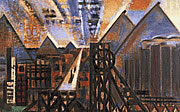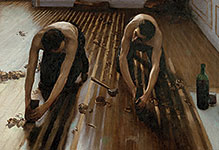
Daily Life
Work, Leisure, Clothing and Textiles, Politics and Portraits, Furniture, Houshold, Funerals, Death, Murder, Family.

#03010127
Chair with blue legs, New Kingdom. Legs in form of a lion's...

#03010128
Stele of Nefertiabet,daughter or sister of the Pharaoh Cheops,dressed i...

#03010133
Limestone statue of Nenkheftka,5th dynasty,2400 BCE. The rendering of the facia...

#03010135
Painted wooden statue of an official,Late Old Kingdom, around 2250 BCE.A young...

#03010136
Wooden models showing bakers at work, 12th dynasty, around 1900 BCE.The faces o...

#03010138
Ivory Headrest, 12th dynasty, around 1985-1795 BCE. Such headrests,made normall...

#03010141
Standing statue of Senebtefy,Late Middle Kingdom, 1700 BCE. Inscribed on the st...

#03010150
Counting the geese: mural from the tomb of Nebamun,from Thebes, 18th dynasty, a...

#03010151
Fragment of a wall painting from the tomb of Nabamun, from Thebes, 18th dynasty...

#03010153
Fragment of a wall painting from the tomb of Nabamun, from Thebes, 18th dynasty...

#03010158
Statue of Ramses II,19th dynasty,around 1250 BCE. The pharaoh is shown wearing...

#03010159
Funerary cloth of Isetnefret, New Kingdom, around 1300- 1070 CE. Isnetfret is s...






